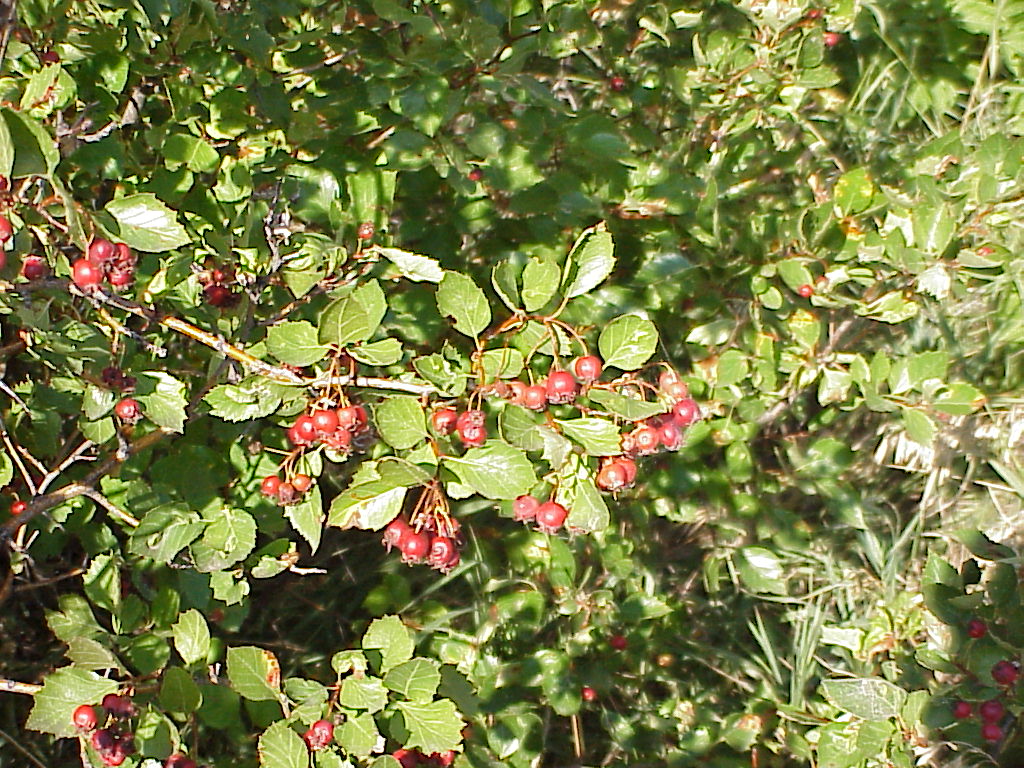English
hawthorn
Scientific Name
Crataegus spp
Arapaho
1. koh’úwuno ; 2. boh’ooonibino ; 3. hoowoo’uubiisTranslation of the Arapaho
1. ‘split berries’ ; 2. ‘thunder berries’ ; 3. ‘praying bush’
Hawthorn and the Arapaho
Food: fruit, dried food.These berries were eaten fresh, or dried and then boiled.
Drug: unspecified. Kroeber reports that a “haw” berry was one item in a personal medicine bag.
Fiber: building material.
Other: glue?
In the story of “Nih’oo3oo and the Seven Sisters” (Dorsey & Kroeber 1997:86ff) a girl is sent off to look for a man, being told to bring back either the wood here in question or ‘yellow willow’ (87). She brings back a stick of ‘praying bush’ and a person called ‘praying-young-man’ is created. In another version of the story (88ff), the man is named “Red Stick Man” (95 <hawaunawnae> in Dorsey’s transcription = hoowoo’uu-nonoh’oe). The plant is described as “the red berry stick of whose berries the bears are very fond, which is very light red color and transparent to the eye while standing.” Kroeber’s notes to story #52 describe the plant as ‘red bark, edible berries.’ He seems to have written in a later note which looks like ‘haws’, which would mean that this is a hawthorn species.
In the story of “The Young Man and his Father-in-Law” (294ff), a young man is sent to find sticks that will be “perfectly straight, without knots or branches” for arrows. He brings home this wood, but it is not considered good enough.
In “Blood Clot Boy” (298ff), the sap of this tree is rubbed on vines (as glue?), the vines placed inside a woman’s tipi while tied to a flute, and a man plays the flute and charms the woman.
In “Bluebird, Buffalo Woman and Elk Woman” (388ff), this is one of four kinds of wood used to make a sweat lodge to resist attack by a buffalo. Whenever the buffalos butted the lodge, this particular wood would stick into the buffalo. “From this are the spots on the red bark of this wood” (394).
